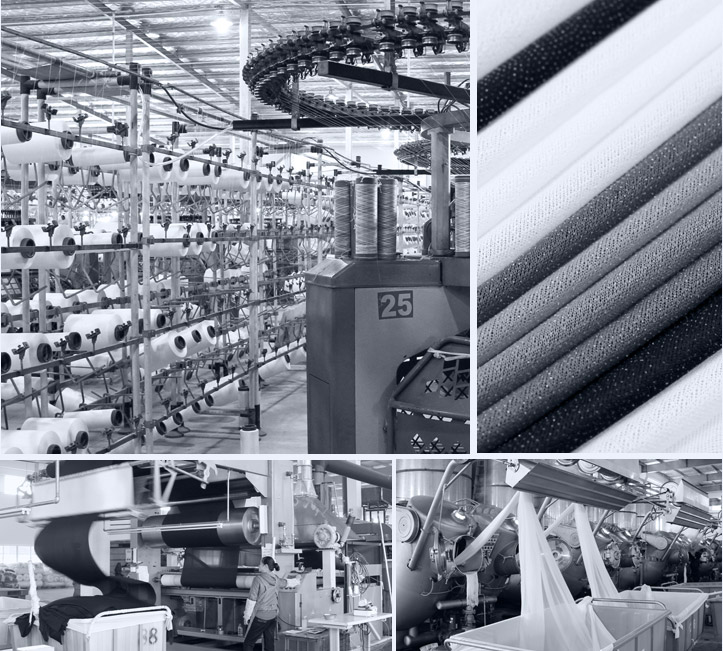What is the role of Color interlining?
Color interlining plays a vital role in the world of fashion, helping to enhance the aesthetics and functionality of various clothing items. It is a thin layer of fabric that is used to add depth, structure, and vibrancy to different garments, such as suits, dresses, blouses, and skirts.
One of the primary roles of color interlining is to provide support and shape to clothing. When used in collars, cuffs, or waistbands, it helps maintain the desired structure and prevents them from losing their shape over time, especially in garments made from softer or more delicate fabrics. By adding stability and stiffness, color interlining ensures that collars stay crisp, cuffs stand upright, and waistbands retain their shape, providing a polished and professional appearance to the wearer.
In addition to structure, color interlining also contributes to the visual aspects of fashion. It adds depth and dimension to fabrics by infusing them with different colors, patterns, or textures. For example, a plain white shirt collar can be transformed into a sophisticated piece with the addition of a color interlining featuring a subtle stripe pattern or a contrasting hue.
Moreover, color interlining can enhance the durability of clothing. It strengthens weak spots, such as buttonholes, ensuring they can withstand regular use and prevent tears or fraying. By reinforcing these areas, color interlining increases the longevity and longevity of garments, making them more resistant to wear and tear.
Another significant role of color interlining is its ability to improve the overall comfort and wearability of clothing. It can provide a soft and smooth lining against the skin, preventing itchiness or irritation caused by certain fabrics. For example, a dress made from a scratchy material like wool can be made more comfortable to wear by adding a color interlining that is gentle against the skin. Additionally, color interlining can help with moisture absorption and breathability, making garments more suitable for different climates or seasons.
In summary, color interlining is an essential component in the fashion industry. It adds structure and shape to clothing, enhances their visual appeal, improves durability, and enhances comfort for the wearer. Whether it's a tailored suit or a flowing summer dress, color interlining plays a significant role in transforming fabrics into stunning and functional garments.
The Influence of Color Interlining on Visual Aesthetics:
Colors are more than just visually appealing; they have the power to evoke emotions, set moods, and create a sense of harmony or contrast in any design. In the realm of interior design, the use of color interlining has emerged as a unique and effective technique to elevate visual aesthetics and make a lasting impression.
Color interlining refers to the practice of adding a layer of colored fabric between the main fabric and the lining of curtains, drapes, or upholstery. It not only enhances the overall appearance of the fabric but also influences the way light interacts with it. By carefully selecting the color of the interlining, designers can achieve different visual effects and significantly transform the mood and ambiance of a room.
One of the major benefits of color interlining is its ability to enhance the richness and depth of colors in fabrics. This technique allows for greater color saturation, making hues appear more vibrant and luxurious. For example, a white fabric with a red interlining will give off a warm, rosy glow, intensifying the impact of the chosen color. Similarly, a blue interlining added to a light-colored fabric can create a cool and tranquil atmosphere.
Color interlining also plays a crucial role in controlling the amount of light that enters a space. By choosing a darker interlining, designers can effectively block out unwanted light, creating a cozy and intimate environment. On the other hand, a lighter interlining can soften the incoming light, diffusing it beautifully and imparting an ethereal and dream-like quality to the room.
Furthermore, the choice of color interlining can be used strategically to complement or contrast other design elements in the space. For instance, by selecting an interlining color that matches or complements the dominant color in the room, designers can create a cohesive and harmonious look. Alternatively, contrasting interlining colors can be used to create bold statements and add visual interest to a design scheme.
In conclusion, the use of color interlining in interior design holds tremendous potential for elevating visual aesthetics. Whether it's intensifying colors, controlling light, or creating harmonious or contrasting effects, color interlining offers a versatile and effective tool that designers can utilize to transform any space into a visually exquisite and captivating environment.






